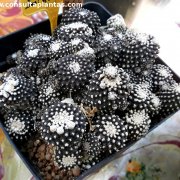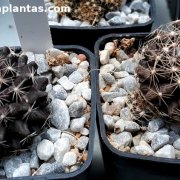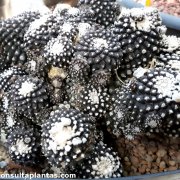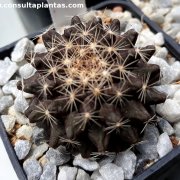Care of the cactus Copiapoa humilis or Echinocactus humilis |
|
The genus Copiapoa, family Cactaceae, comprises 25 species of cactus native to northern Chile. Some species are: Copiapoa humilis, Copiapoa grandiflora, Copiapoa echinoides, Copiapoa cinerea, Copiapoa calderana, Copiapoa malletiana, Copiapoa gigantea, Copiapoa coquimbana, Copiapoa taltalensis, Copiapoa krainziana, Copiapoa marginata. This species is native to the regions of Atacama and Antofagasta, Chile. They are small cacti with a globose body, tuberous roots and a light green color with a flattened apex that reach 5 cm (1.96") in diameter. They produce suckers forming colonies. On the 13-16 ribs they have spirally arranged tubercles and woolly areoles at the apex. They have 3 to 6 light spines with a dark tip. The flowers are yellow and open in the morning. Echinocactus humilis is used in rockery, in cold greenhouses and on balconies and terraces; it can be grown indoors well ventilated and well lit. Copiapoa humilis prefers full sun or light shade exposure. In winter the temperature must be above 5 ºC (39.2 ºF). The soil can be a mixture of equal parts washed siliceous coarse sand, blond peat, and topsoil. The transplant is done during the spring. Always water waiting for the soil to be completely dry; they are very sensitive to excess moisture. At the end of autumn the waterings are suspended until they resume in spring. Fertilize every 4 weeks in summer with mineral fertilizer for cacti and succulents. Copiapoa humilis does not need pruning. Echinocactus humilis is a very sensitive plant to excess humidity. Copiapoa humilis propagates by seeds sown in spring in a slightly humid sandy substrate. |
Images of the cactus Copiapoa humilis or Echinocactus humilis |
Find plants
Copiapoa humilis or Echinocactus humilis | Care and Growing
© 2025 FavThemes



